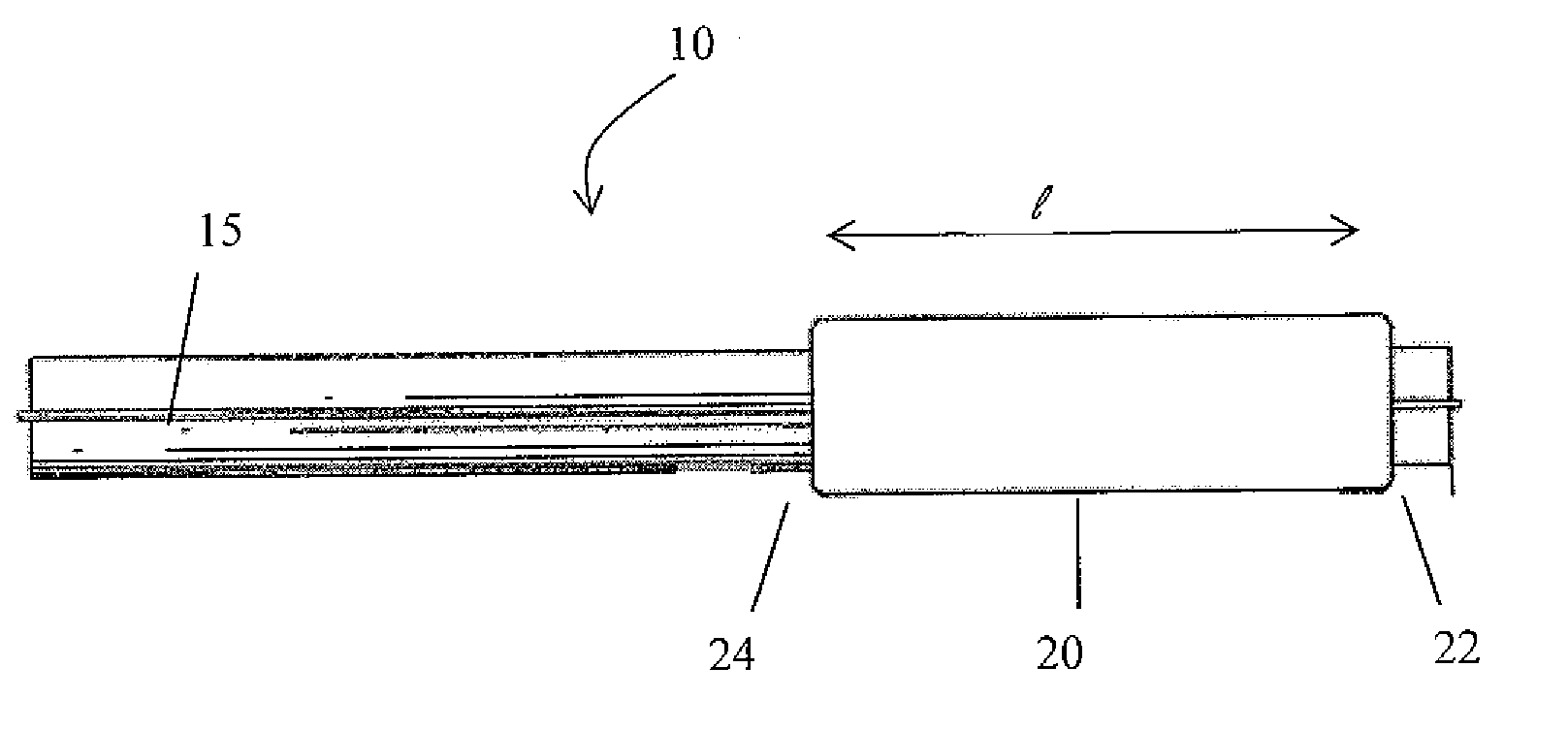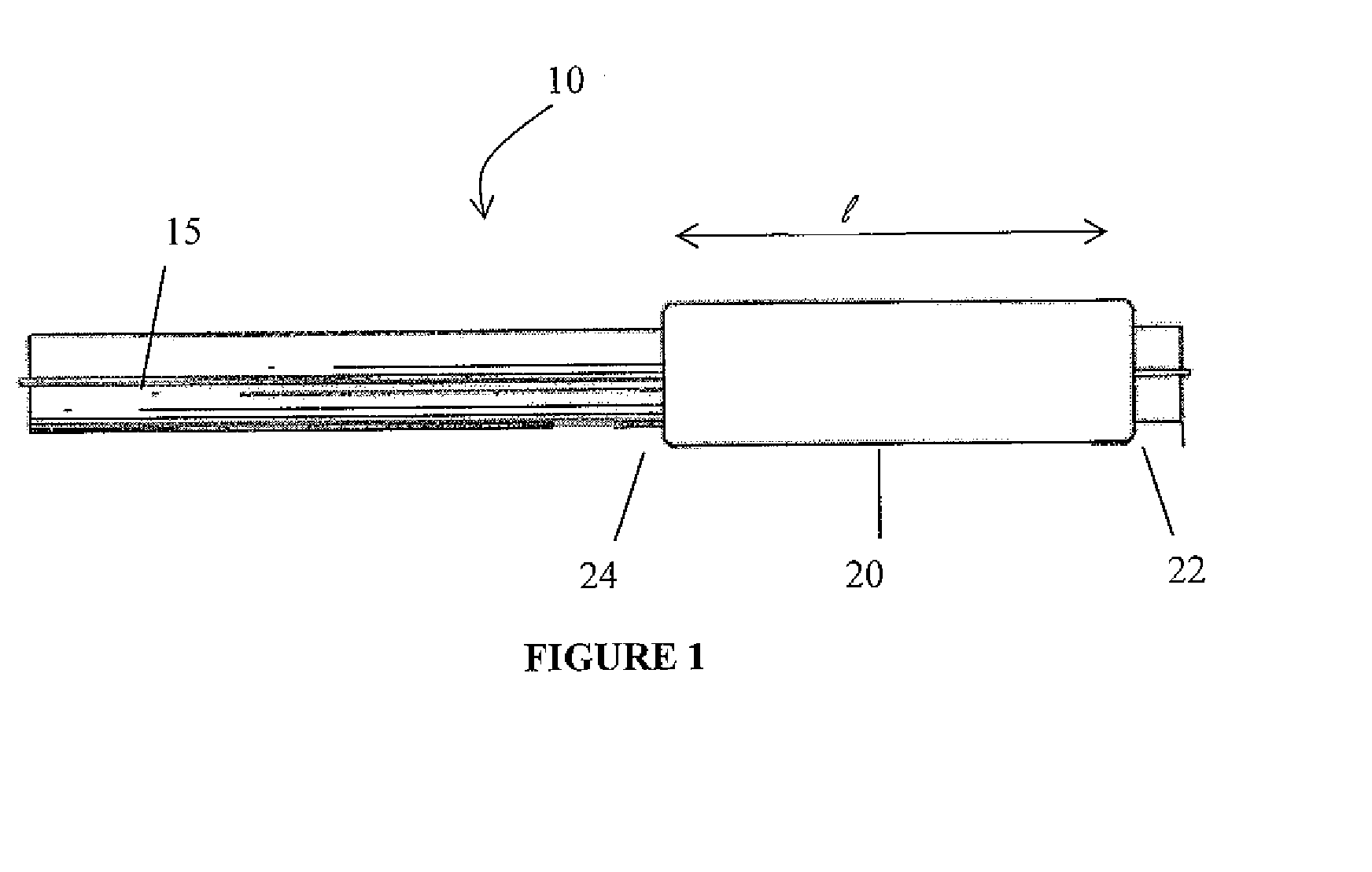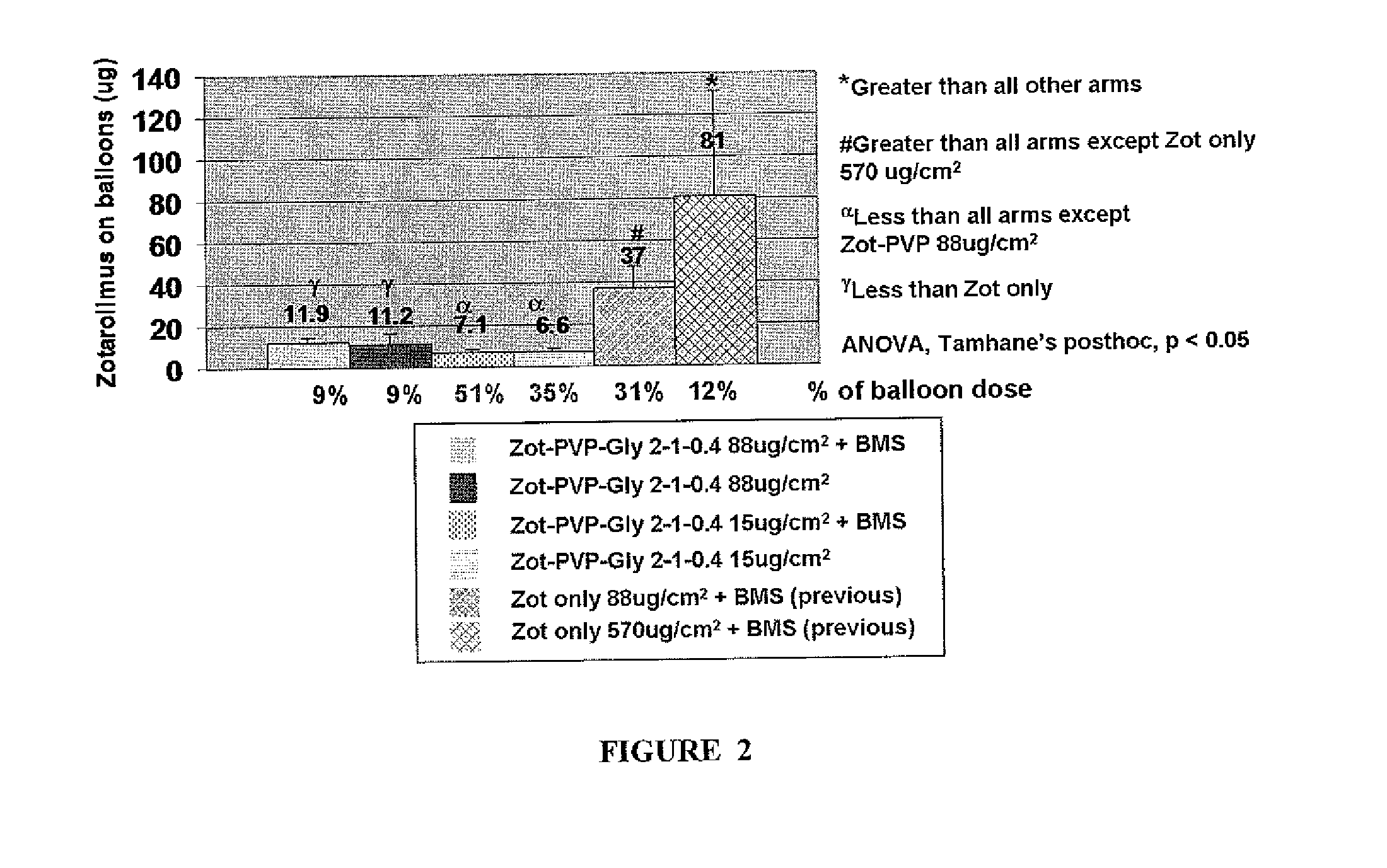Hydrophobic therapueutic agent and solid emulsifier coating for drug coated balloon
a technology of hydrophobic therapueutic agent and solid emulsifier, which is applied in the direction of pretreatment surface, coating, surgery, etc., can solve the problems of late stent thrombosis and blood vessel collapse, and achieve the effect of improving coating transfer efficiency and increasing uptake of highly water insoluble therapeutic agents
- Summary
- Abstract
- Description
- Claims
- Application Information
AI Technical Summary
Benefits of technology
Problems solved by technology
Method used
Image
Examples
second embodiment
[0044]In a second embodiment, a coating comprising 2.0 gm everolimus, 1.0 gm Vitamin E TPGS, 5.95 gm acetone, and 1.05 gm ethanol can be formulated and applied to a balloon. After mixing the ingredients of the coating formulation, the resulting solution can be applied to a balloon made of nylon polymers, such as a 6×100 mm Agiltrac balloon catheter (Abbott Vascular, Santa Clara, Calif.) by a direct dispensing method. The balloon can be inflated to 2 atm pressure and can be passed under a fixed dispense tube while being rotated and translated. A dose density of 100 μg / cm2 can achieved by application of 0.119 ml of solution. After application of the coating solution, the balloon can baked at a temperature of 50° C. for about 30 minutes to remove remaining solvent.
third embodiment
[0045]In a third embodiment, a coating comprising 0.5 gm paclitaxel, 0.25 gm Tween 60, 0.075 gm Cremophor EL, 7.8 gm acetone, and 1.375 gm ethanol can be formulated and applied to a balloon. After mixing the ingredients of the coating formulation, the resulting solution can be applied to a balloon made of nylon polymers, such as a 6×100 mm Agiltrac balloon catheter (Abbott Vascular, Santa Clara, Calif.) by a direct dispensing method. The balloon can be inflated to 2 atm pressure and can be passed under a fixed dispense tube while being rotated and translated. A dose density of 300 μg / cm2 can be achieved by application of 0.143 ml of solution. After application of the coating solution, the balloon can be baked at a temperature of 50° C. for about 60 minutes to remove remaining solvent.
fourth embodiment
[0046]In a fourth embodiment, a coating comprising 0.25 gm zotarolimus, 0.25 gm 1,2-distearoyl-sn-glycero-3-phosphoethanolamine-N-[methoxy(polyethyleneglycol)-2000] (ammonium salt) (18:0 PEG2000 PE), 2.25 gm methanol and 2.25 gm acetone is formulated and applied to a balloon. After mixing the ingredients of the coating formulation, the resulting solution is applied to a 6×40 mm Agiltrac balloon catheter (Abbott Vascular, Santa Clara, Calif.) by a direct dispensing method. The balloon is inflated to 2 atm pressure and is passed under a fixed dispense tube while being rotated and translated. A dose density of 300 μg / cm2 is achieved by application of 64.5 μl of solution. After application of the coating solution, the balloon is baked at a temperature of 50° C. for about 60 minutes to remove remaining solvent.
[0047]In another aspect of the disclosed subject matter, less than 10% of the coating remains on the balloon or medical device post delivery into a lumen of a subject. That is, at ...
PUM
| Property | Measurement | Unit |
|---|---|---|
| Temperature | aaaaa | aaaaa |
| Percent by mass | aaaaa | aaaaa |
| Pressure | aaaaa | aaaaa |
Abstract
Description
Claims
Application Information
 Login to View More
Login to View More - R&D
- Intellectual Property
- Life Sciences
- Materials
- Tech Scout
- Unparalleled Data Quality
- Higher Quality Content
- 60% Fewer Hallucinations
Browse by: Latest US Patents, China's latest patents, Technical Efficacy Thesaurus, Application Domain, Technology Topic, Popular Technical Reports.
© 2025 PatSnap. All rights reserved.Legal|Privacy policy|Modern Slavery Act Transparency Statement|Sitemap|About US| Contact US: help@patsnap.com



